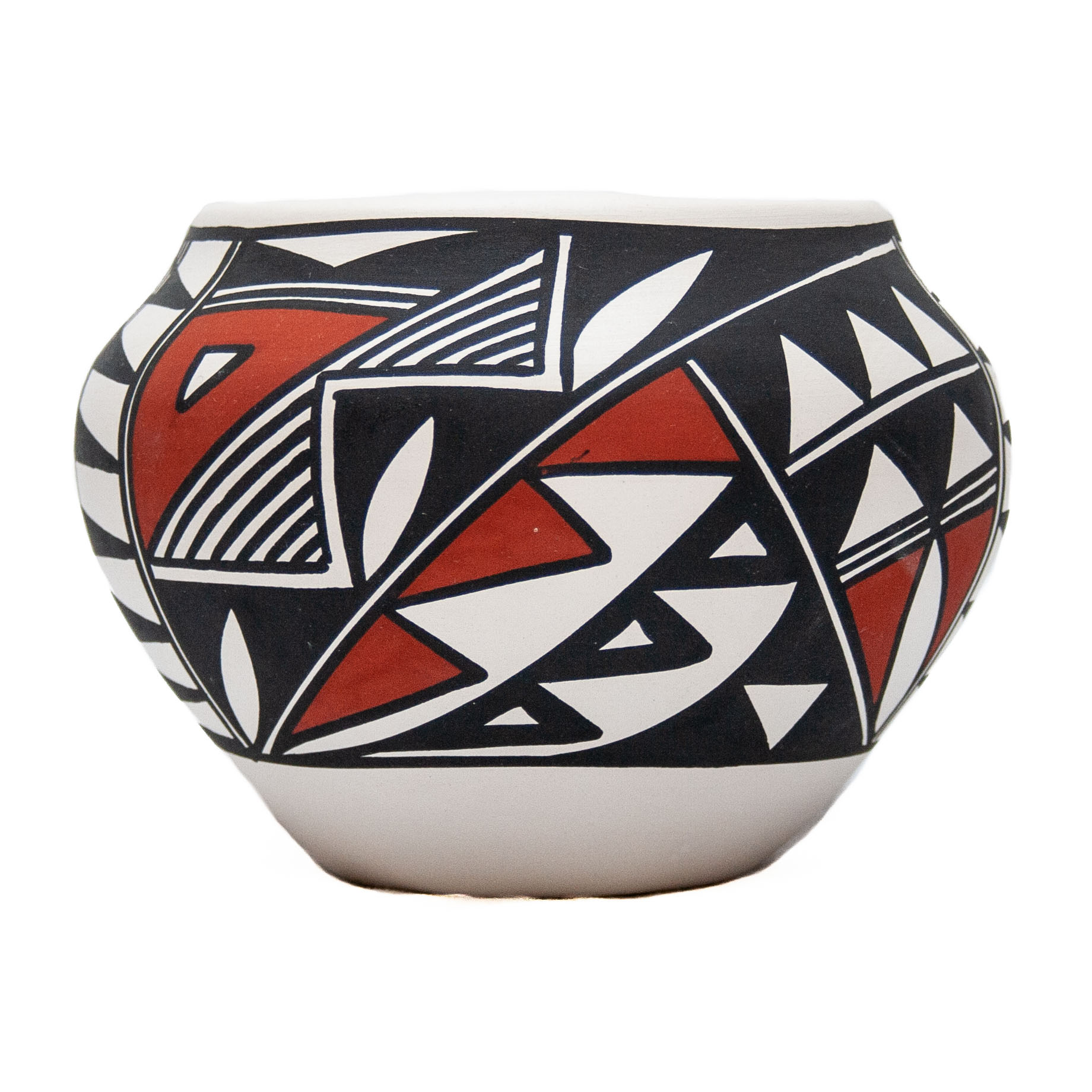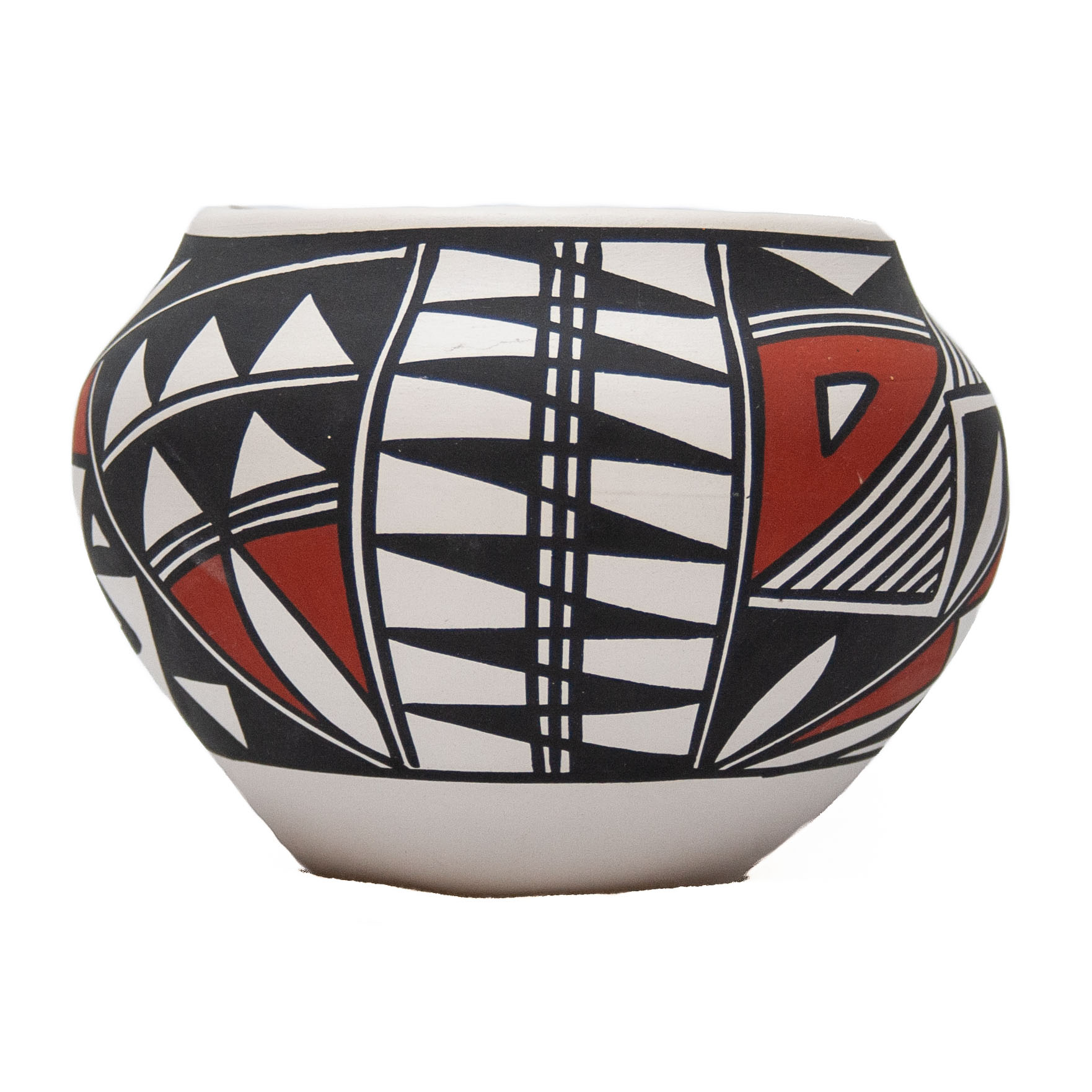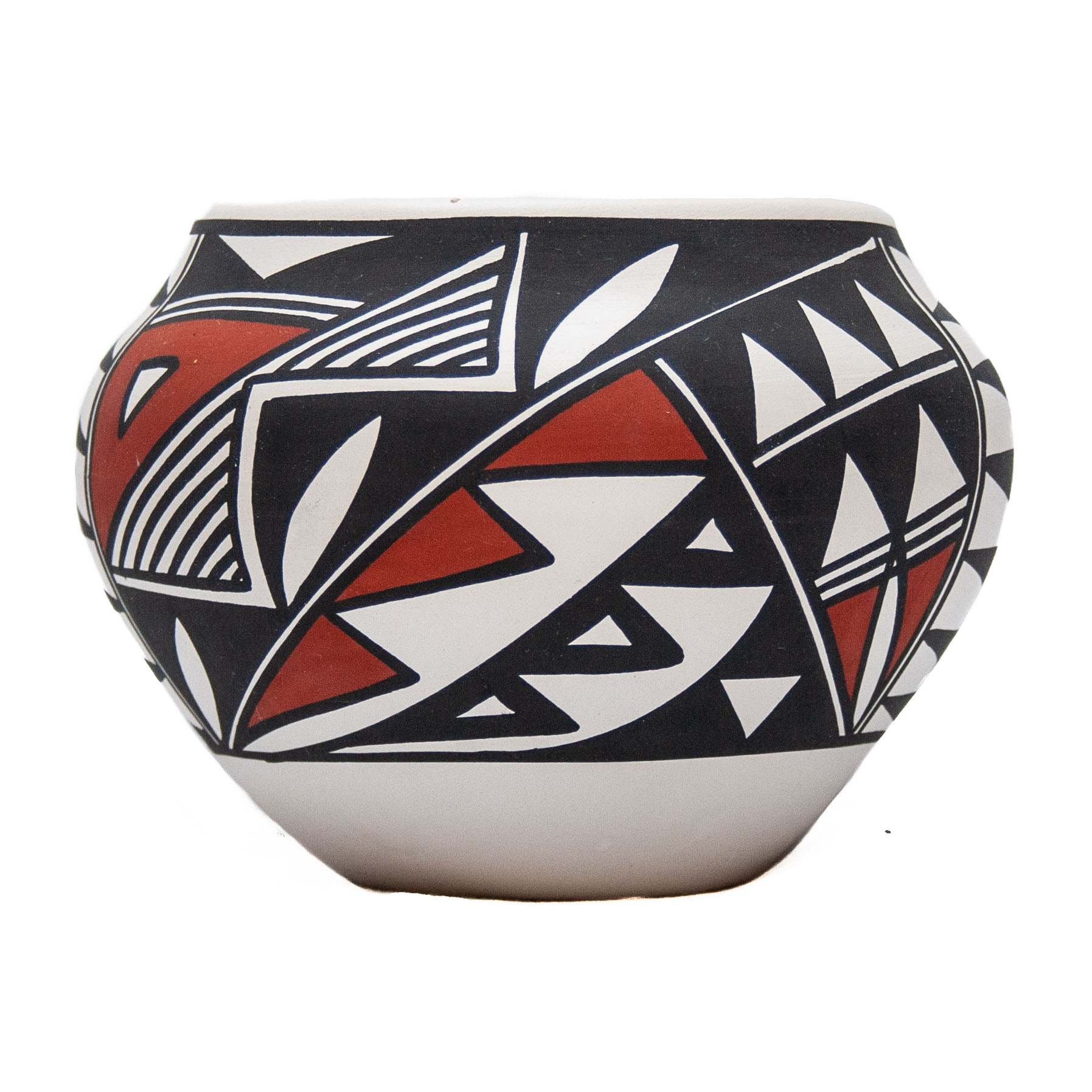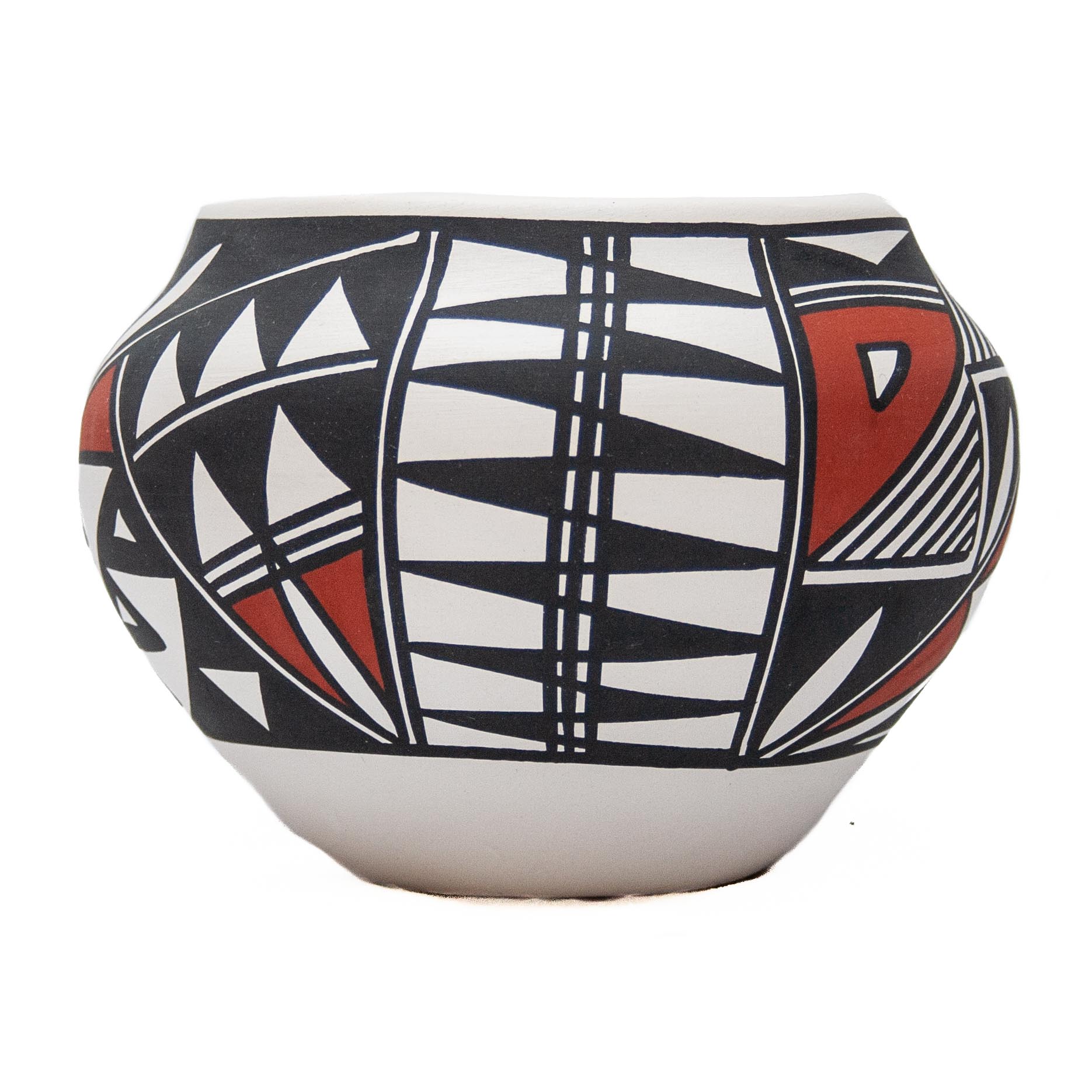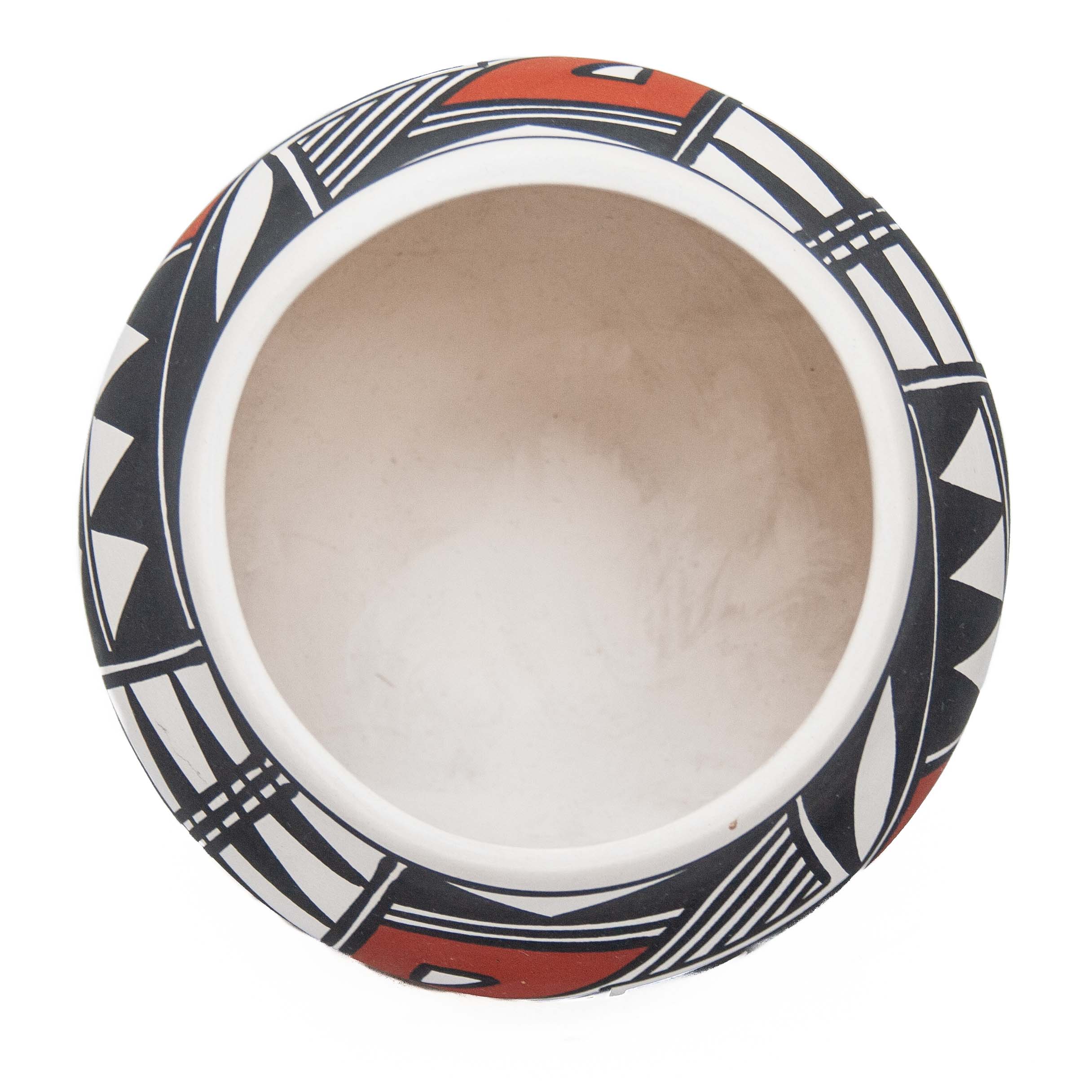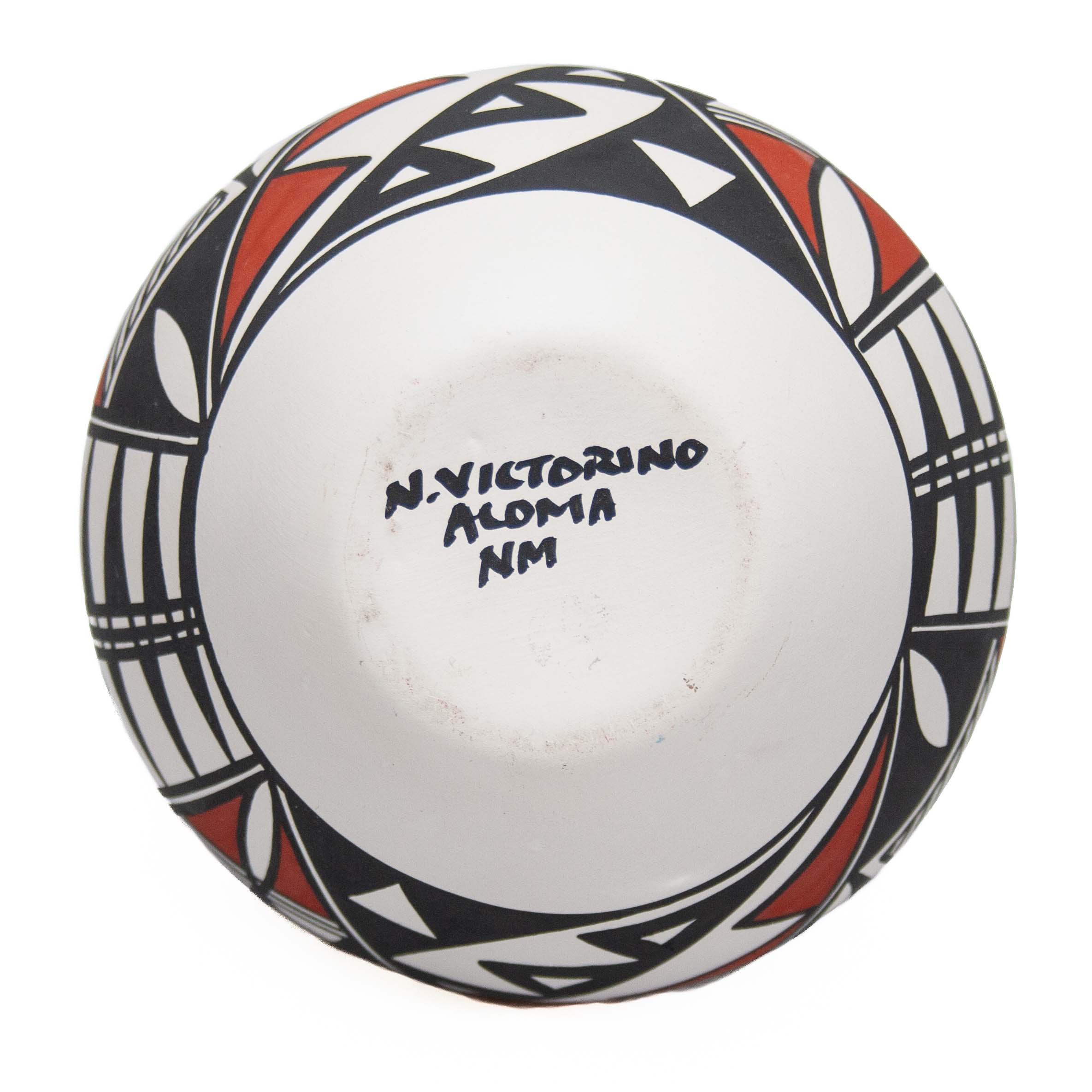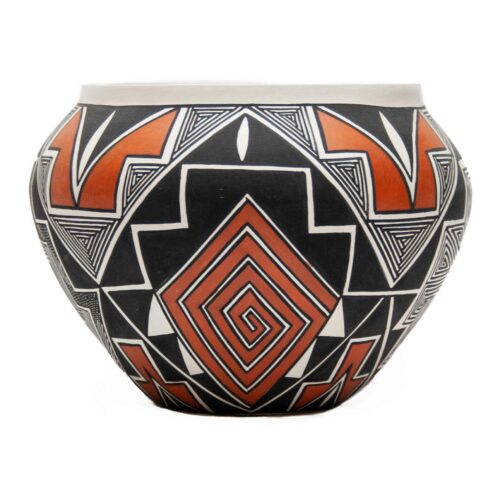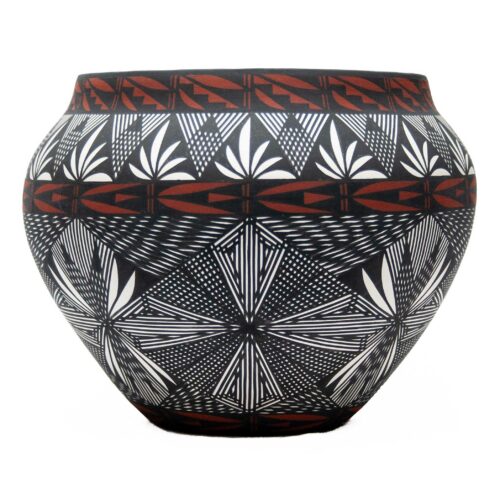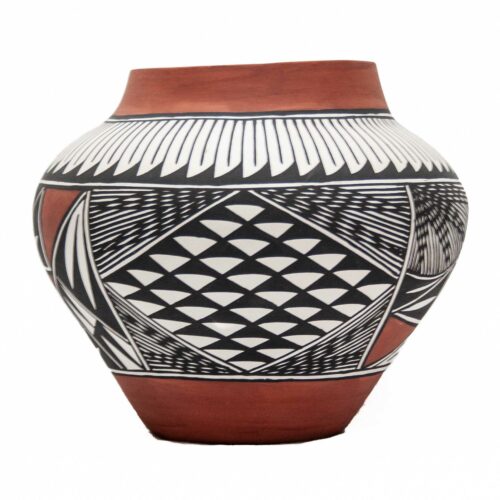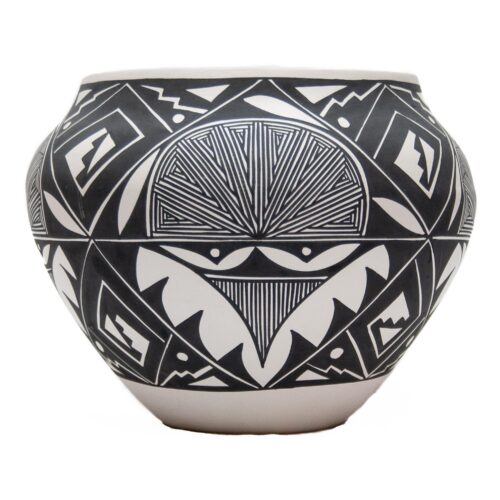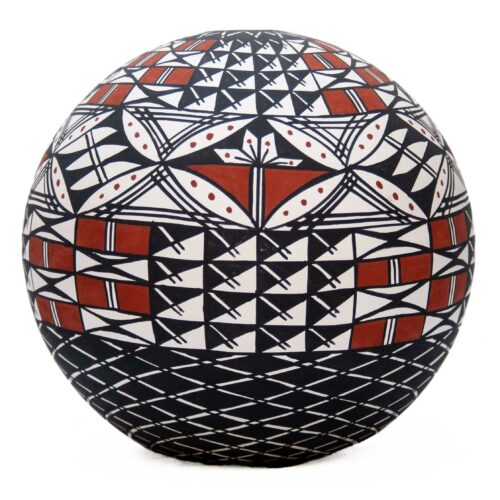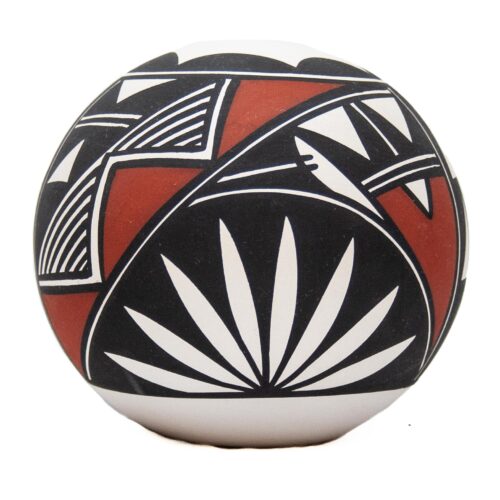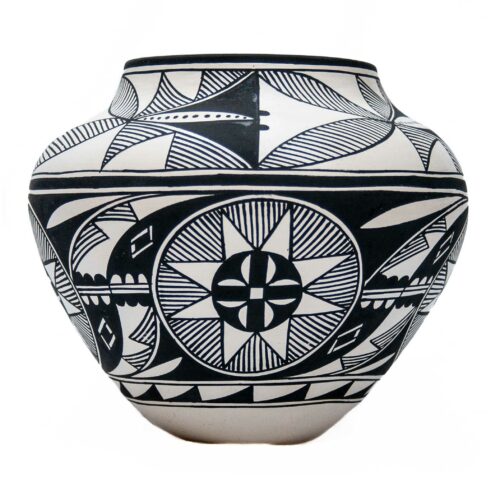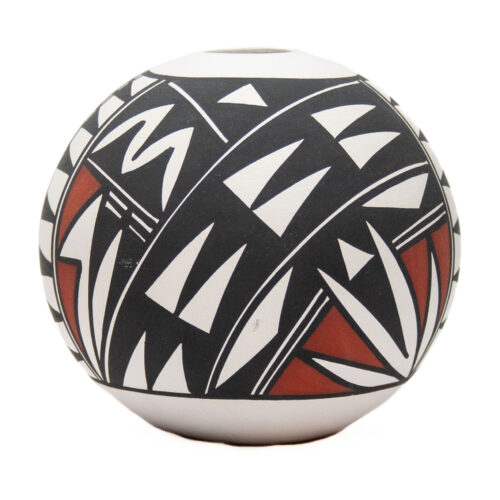Nerissa Victorino Acoma Pottery
£225.00
Clay
Natural pigments
Height: 110 mm
Width: 140 mm
Opening: 96 mm
Handmade and signed by artist potter Nerissa Victorino of the Acoma Tribe (New Mexico)
“The Acoma pueblo is best known for their unique pottery style and method, utilizing techniques which have been in practice since the Acoma establishment in 1150 A.D (when the Aztec civilization was established around this time in Mexico, Southwestern Native American art was already at its peak). Perhaps their finest export, Acoma pottery is emblematic of the lifestyle of people who make it. It typically features thin walls, fluted rims, hand painted animal motifs, geometric patterns usually rendered in stark black and white, or muted warm colors, and is unglazed — stylistic elements which collectively make Acoma pottery easily recognizable. Like most traditional pottery, the Acoma people created these objects with functionality in mind, using them for storage, drinking, eating, and other ceremonial purposes. Types of pottery forms include bowls, seed jars, effigy pots, and drinking pots. Because of the dry climate and the type of clay native to the land, pottery produced in this region is both lightweight and durable. The clay is naturally gray, but appears white in most Acoma pottery because it is layered with Kaolin, a type of soft white clay. Pigments are derived from natural resources such as minerals, plants, and other types of clays. Acoma pottery follows the ‘coil and scrape’ method, which is how it has been crafted for centuries until modern technology allowed potters to use molds and slip casts for the sake of ease and time. First, the clay is gathered and prepared. This preparation involves getting rid of impurities, tempering the clay so that it is porous and does not shrink. This can be done using powdered rock or remnants of broken pottery. Next, the clay is set aside to be cured and is kept damp. While the clay cures, the potter sources their pigments from natural materials. Once everything is ready, the potter begins to coil the clay, building up a shape from the bottom with long ropes made of clay. Once the clay is built up to its desired size and shape, the clay is scraped so that smooth surfaces both exterior and interior can be achieved. Traditionally, the Acoma people use gourds for this step in the process. While the object is still damp, the potter will then apply a slip, a thin coat of liquidized clay, which is then polished with a stone. Decorations are painted on this layer with a brush made of a yucca plant. The pottery is then fired outdoors, with manure typically serving as fuel. If burning manure makes contact with pot during the firing process, a dark spot will appear on the point of contact called a “fire cloud”. This imperfection is embraced by the Acoma potter and is a sure way of knowing that the pot was indeed fired in a traditional kiln versus a modern, electric one. […]” Click here for full article courtesy of MIR Appraisal.
In stock

